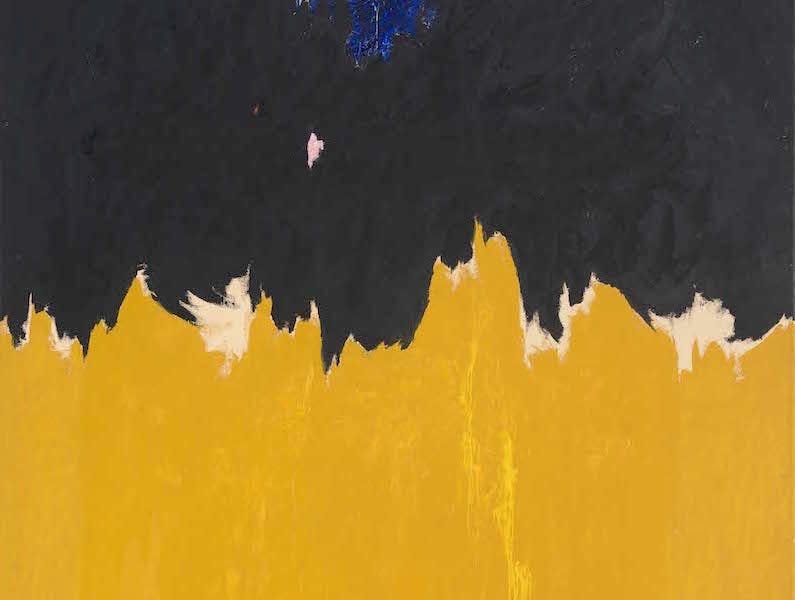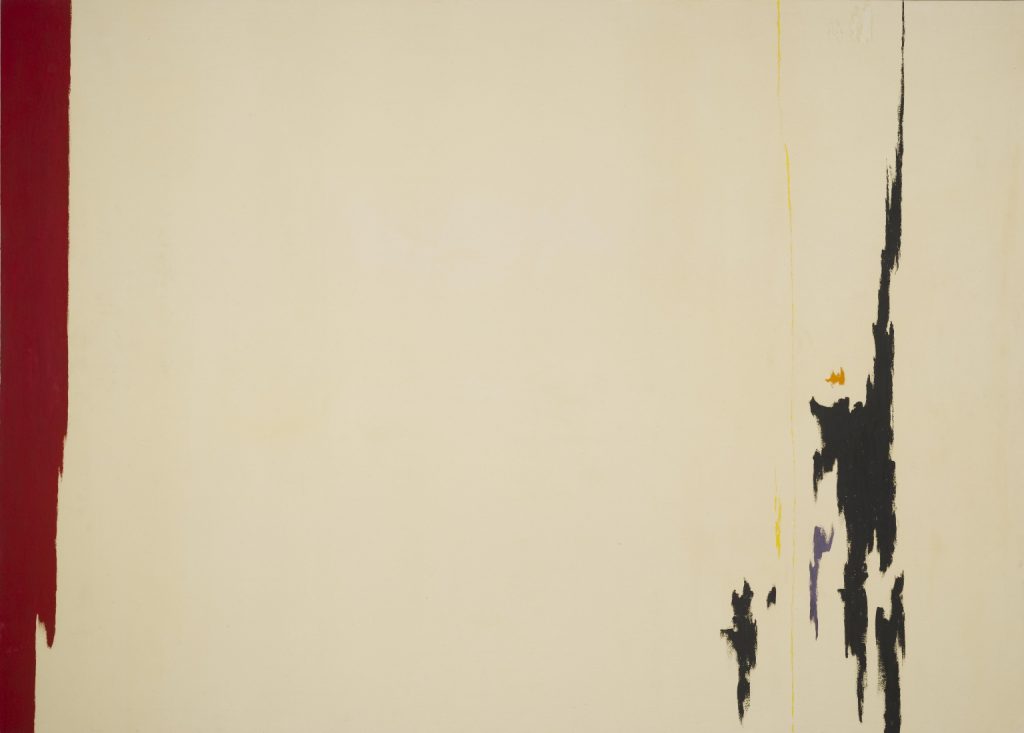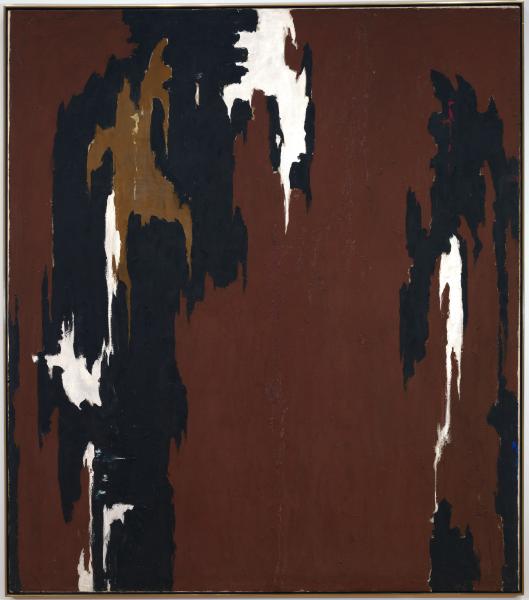Abstract

https://www.apollo-magazine.com/a-rare-chance-to-see-works-by-clyfford-still-in-london/
Clyfford Still was an American painter associated with the Abstract Expressionist movement. He is best known for his paintings that resemble flame-like brush strokes or shapes. Inspired by the windswept landscape of the Canadian prairie, he developed a technique of applying thick layers of paint onto the canvas using a palette knife, creating jagged flares of dark tones against lighter areas of yellows, oranges, and reds.

https://www.wikiart.org/en/clyfford-still
Clyfford Still began to quickly see national recognition. His paintings were embraced by other artists and critics, who considered Still to be one of the most original artist of the time. Jackson pollock even said that “Still’s work makes the rest of us look academic”.

https://collection.clyffordstillmuseum.org/object/ph-1139

https://americanart.si.edu/artwork/1946-h-indian-red-and-black-23063
To me, many of the shapes and patterns seen in Clyfford Still’s work resembles the patterns found in nature, such as the pattern on a cows fur or the pattern and shapes of the markings on a koi fish. Although there might not be any meaning behind his paintings, I find them visually pleasing to look at, and I find it interesting that everyone will have a slightly different feeling from the paintings when viewing them.
References
ClyffordStillMuseum.org
https://collection.clyffordstillmuseum.org/object/ph-1139
https://americanart.si.edu/artwork/1946-h-indian-red-and-black-23063
http://www.artnet.com/artists/clyfford-still/
